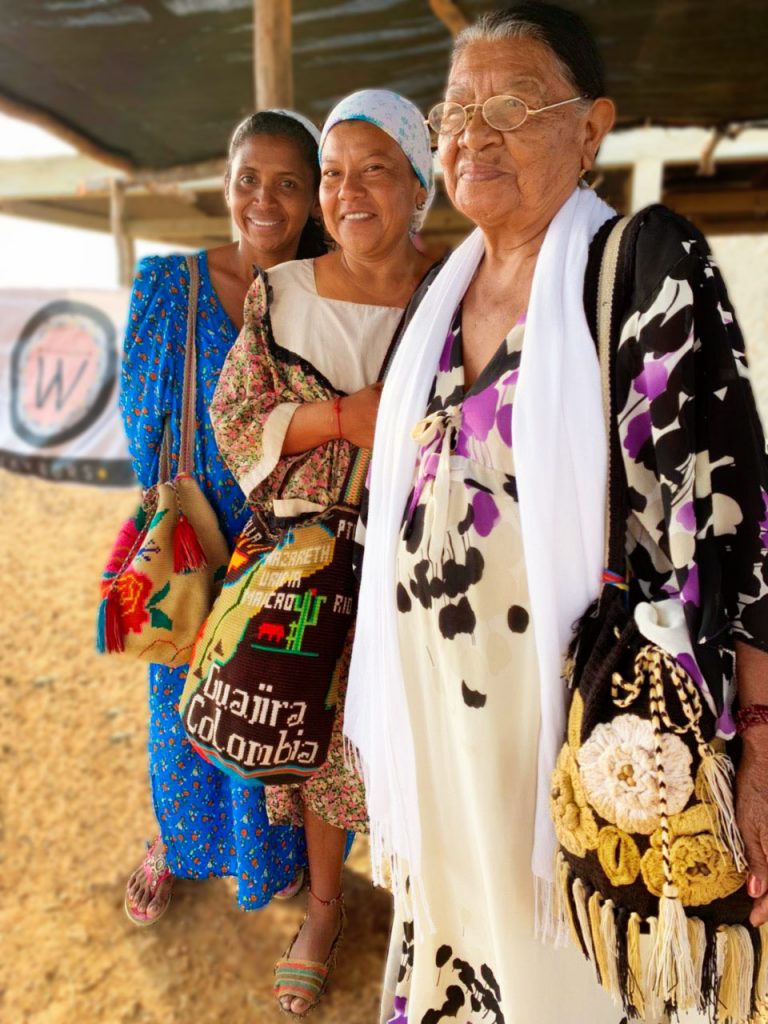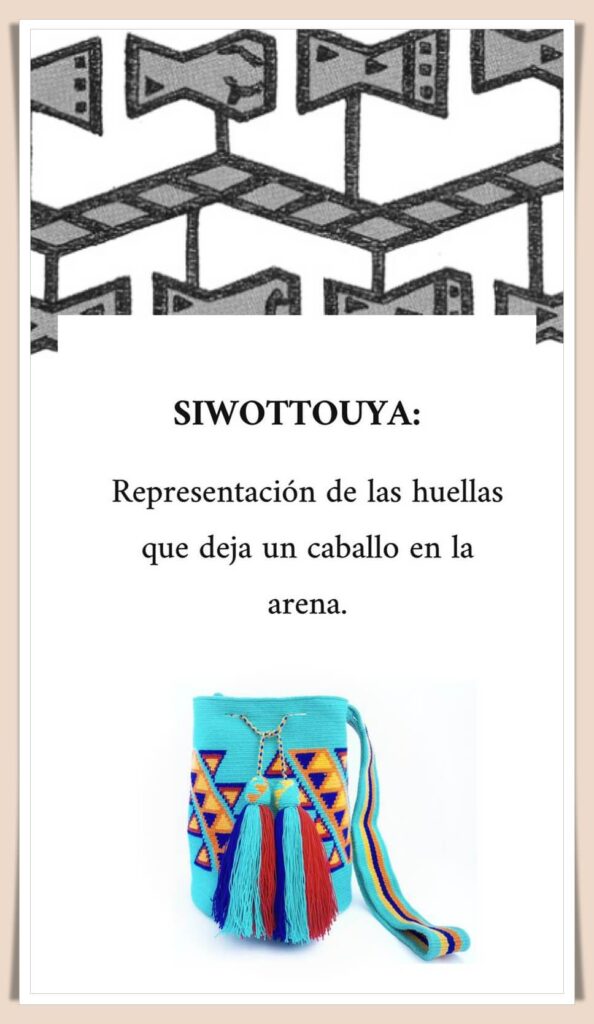Behind the Wayuu fabric there is a great meaning about women and all their virtues. They are the leaders of the Wayuu community and are in charge of combining techniques to make the kanas (figures). in these Colombian bags.

In all our creations the creativity of an indigenous woman emerges, heir to an ancient culture and an ancestral legacy.
In our store you can find a wide variety of Wayuu backpacks and handicrafts, both for men as well as for women.
MEANING OF THE KANAS AND COLORS IN THE WAYUU BACKPACKS
the kanas are the figures embodied in the wayuu handicrafts and each kana symbolizes events or elements of nature. The materials that are used for each backpack are of natural origin, coming from the guajira.
Here we show you the meaning of the kanas and colors according to our Wayuu culture.






SYMBOLS OF WOMEN IN THE WAYUU WEAVING
The first bleeding of every woman marks a before and after, but especially in a Wayuu woman.
After her first menstruation she creates "the confinement«, a feminine ceremony where her mother, aunts and grandmothers pamper her, take care of her and purify her body and soul. only in this state All the customs and traditions of the Wayuu culture are transferred to it.

It is the moment when the spider Wareke arrives in town to teach him the art of Wayuu weaving. Through the legend of the spider Wareke is intended to teach:
- The importance of women's independence and self-sufficiency.
- The empowerment of being a woman and belonging to an ethnic group.
- To be in harmony with their nature and their life cycles.
WAREKE SPIDER LEGEND

Legend has it that a young Wayuu was hunting through the lands of La Guajira and while he was walking he met a not very pretty girl named Wareke. The boy was surprised to learn that he had no family, so he couldn't help but help her and take her to live with him and his sisters.
His welcome was not very pleasant, as the young man's sisters were unfriendly and distant with the new member. However, Wareke did not mind this as he He had a great mission: to teach them the Wayuu weaving.
Wareke was not just a nasty-looking girl, but rather an extraordinary being. Every night, under the moon, she turned into a beautiful woman. From the mouth of this beautiful and magical being came colored threads with which he created designs never seen before.
Backpacks, hammocks and other Wayuu handicrafts were found by the sisters in the middle of the forest. The little women, stunned by such an exquisite technique, immediately went to their brother to show him everything they had discovered.
everyone was wondering who was behind such creative and intelligent art with which elements of nature such as animals and flowers were captured?
Wareke knew that each element of nature was the reflection of the woman, a being guided by her own intuition, attentive to her subconscious and respected above all things.
One morning, the younger sister woke up euphoric and immediately went to tell her brother about the dream she had. In this dream, a divine being told him all the customs, stories and traditions of his culture.. But the most precious thing was the power that it gave her to weave in Wayuu.
That night the brother went towards the forest and under the moon he waited for the beautiful woman in the same scene that his sister had told him. Finally, after a long wait, he saw her and as he got closer he observed how colored threads came out of her mouth. Having her close, he couldn't help but run and hug her.. Surprisingly, the beautiful woman turned into a spider and got lost among the trees.
Only a ball of threads and the secret of his Wayuu culture remained in the young man's hands. Well the wayuu woman is the only being that can drink from such knowledge and wisdom.
TYPES OF WAYUU CRAFTS
- Wayuu bracelets: pieces of different shapes, colors and sizes.
- Wayuu ouwomü hats: They are woven exclusively by Wayuu men. For its elaboration they use mawisa palm, typical of La Guajira.
- Wayuu keychains: its tassels or colored pompoms make it an eye-catching and fun piece.
- The wayuu chinchorro: They are actually the beds of the Wayuu and are made of an elastic and light fabric.
- The wayuu hammock: used to rest, it is composed of a heavier and more compact fabric.
- Wayuu backpacks and bags: These are the best known pieces of Wayuu weaving. However, there is a wide variety of compositions.
- Susu: It is actually the wayuu backpack, a medium bag with different designs and colors.
- Susuchon: It is a small bag for men used as a fanny pack to store money or tobacco.
- susuainiakajatu: It is a women's bag, large and tall used as a travel suitcase.
- Kapatera: It is a man's bag, used for the same purpose as the previous one.
- Piulas or kattowi or Susu uttiakajamatu: It consists of a leather mesh made to carry heavy utensils.
- Wayuu or amuche ceramics: "amuche" means "múcura" in the Wayuunaiki language. For its elaboration, different types of clay are mixed and different kanas are drawn on them, most of them referring to the path of life since they are usually created as urns for Wayuu burials. There are other compositions such as: pots, pots, vases, glasses, cups, etc.
